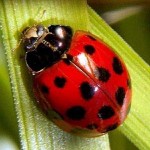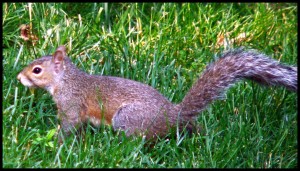READY TO GET STARTED?
REQUEST A FREE ESTIMATE
Fill out the form below or call (888) 466-7849 for a free, no-obligation estimate.
Last week we talked about the reasons that it can be best to hire a professional pest control company (Why Choose a Professional Pest Control Company?) to come in rather than doing-it-yourself. A simple recap: Professionals are the experts in their field and are better equipped to identify the problem and the source, treat the problem, and develop a plan to keep pests or rodents from returning.
Whether faced with an infestation or looking for preventative measures, here are some tips on What to Look for When Choosing an Exterminator:
We often think of critters in our house as the big bad monsters that are under our bed. In our minds, these intruders are the size of a Great Dane running around in our walls or in our attic. But that’s not always the case. A house mouse is typically between 2 1/2-3 3/4″ long, not the monster we imagine it to be in our heads.
The world is full of tiny little creatures. And it seems that bigger isn’t always better since so many things come in “mini” versions; mini candy bars, mini dogs, mini cars, iPad minis…things seem cuter when they’re MINI. Animals are no different! Miniature animals are sure to elicit an “awwwww” from even the toughest hearts!
Check out this Flickr page of “Tiny Animals on Fingers“. There are lots of pictures that are sure to make you smile!
Christmas is a month away which means the kids will soon be getting out of school for Christmas break. During these days you’ll need to keep them occupied when they’re cooped up inside the house. Luckily, PestWorldforKids.org has got you covered with their Critter Crafts.
Critter Crafts are educational kid crafts that are creative bug inspired projects that are fun for kids…and even adults. You can keep kids occupied by creating ladybug hats, bumblebee bookmarks, mouse headbands, and lots of other fun creations.
It doesn’t stop at arts and crafts though, it also has some great ideas for some pest inspired snacks as well. Worms in dirt, celery and PB butterflies, and apple ladybugs are just a few of the delicious looking treats that they feature on their site.
PestWorldforKids.org offers a lot of entertaining games and learning tools for kids. Help your kids to learn about bugs and rodents…they are part of nature afterall!
If you’ve read this blog before then you know that prevention is key. Whether talking about ants, termites, mice, or other pests and rodents, prevention is always the first step. Taking the proper steps to prevent these creatures from entering your home is the key to eliminating pest and rodent problems.
According to the Center for Disease Control and Prevention, rodents, such as rats and mice, spread over 35 diseases. Their diseases are spread through contamination by urine, feces, saliva, or bites.
So what are the proper steps to getting rid of rodents in your home?
First, is a thorough inspection of your home by a licensed professional who is knowledgeable about wildlife removal. Northwest Exterminating’s wildlife team specializes in the exclusion, removal, and control of rodents and wildlife. The wildlife team will inspect your property for any current infestations and points of entry. After that, they will work with you to customize a plan to get rid of any current rodents and the necessary steps to prevent future rodent infestations.
Second, is trapping the rodent. After your rodent control specialist has inspected your property and identified the infestation they will place traps or bait in the areas where the rodents will most likely travel.
Third, after rodents have been trapped and controlled, the wildlife team will work with you to take the necessary steps to prevent future rats and mice from returning. Proper prevention can include but is not limited to sealing cracks, blocking off entry points, eliminating food sources, and cutting back tree limbs from the roofline.
Lastly, it is very important that after the rodents have been properly trapped and out of your home that the area is carefully cleaned to avoid the spread of disease. Droppings and urine should be cleaned immediately, any nests should be removed, damaged wires repaired, and contaminated insulation should be replaced.
For more questions on rodent or wildlife control please call 888-466-7849 or visit us at www.callnorthwest.com
Watching from your kitchen as squirrels and other wildlife run around the back yard can be amusing, but finding these animals frantically scurrying in your attic or garage is anything but funny. Northwest Exterminating wants to remind homeowners to be aware that all kinds of nuisance critters are looking to stay warm this season and may try to gain access to the home.
Finding any wildlife in your home can be an unpleasant experience. It is important to remember that these animals are wild and shouldn’t be handled without the help of a professional animal removal company. In fact, they can bite, claw or scratch if they feel threatened and you don’t know if they are harboring a disease.
Homeowners should do a careful check along the outside of the home to close up any gaps or entry points. The National Pest Management Association (NPMA) recommends the following tips to specifically keep nuisance wildlife in the great outdoors where they belong:
For more information on wildlife animal removal and how to protect your home, visit www.callnorthwest.com.
Source: PPMA
 Ladybugs Seek Warmth in Homes
Ladybugs Seek Warmth in HomesLadybugs are beneficial insects but when they overwinter in your home they become a nuisance pest. They spend the warmer months of spring and summer growing their populations and like other overwintering pests, they seek warmth from the cold temperatures in fall and winter. Many seek shelter under rocks, leaves, or other items found in nature, then you have those that find shelter in homes and buildings.
Although typically harmless, ladybugs can aggravate asthma and cause allergic reactions in people. They can also emit a foul smelling, yellowish fluid that can stain surfaces.
Keeping ladybugs out of your home starts with the usual preventative pest management steps that we typically cover in our blogs: screen all windows, keep doors closed, door sweeps on exterior doors, and seal all cracks and crevices around the exterior of the home (windows, doors, pipes, etc).
If ladybugs have already found their way into your home, use a vacuum cleaner to clean them up. Empty the vacuum bag into a trash bag and make sure it is tightly closed. Discard of the trash bag in a sealed outside container. If you have a ladybug infestation, call a professional pest control company to evaluate, assess, and treat the problem. Call Northwest Exterminating for more on ladybug pest control.
In our last blog we discussed the potential health threats and property damage that animals can cause when they enter your home. We’re not talking about dogs and cats here, we’re talking about the animals that belong in the wild: bats, raccoons, squirrels , mice, opossums, and other wildlife. With the cold temperatures we are starting to experience, it’s a prime time for wild animals to seek warmth and shelter in homes.
Here are some helpful tips on how to keep wildlife out of your home:
If you hear wildlife in your home, it is best to call a professional animal removal company. Some animals can get aggressive when they feel they are being threatened. Northwest’s wildlife control specialist can help to remove the animal, seal off entry points, and help you to ensure that other wildlife do not return.
Those furry little creatures are cute outdoors but they somehow turn into scary monsters when they’re scurrying through your attic, basement, or even your walls. During the fall and winter months different wildlife can make their way into houses seeking warmth from the outside cold.
 Common invaders like squirrels, bats, raccoons, and possums can be a threat to your health, property, and even your safety. These animals can carry diseases and can even get aggressive when they feel threatened. They can damage your property by gnawing on sheet rock, wood, insulation, storage containers, and wiring (a potential fire hazard).
Common invaders like squirrels, bats, raccoons, and possums can be a threat to your health, property, and even your safety. These animals can carry diseases and can even get aggressive when they feel threatened. They can damage your property by gnawing on sheet rock, wood, insulation, storage containers, and wiring (a potential fire hazard).
There are easy steps to take that will help keep animals out of your home for the colder seasons: take trash out regularly and seal tightly and cut back tree limbs from your roof line. Animals, especially squirrels, use tree limbs as an entry to your home. Look for gnaw marks and feces and listen for scurrying sounds as indicators that you may have unwanted guests in your home.
Because these animals have a potential to be dangerous, it is best to call a wildlife removal company to properly remove these animals. Call Northwest Exterminating for animal removal.
Those furry little creatures are cute outdoors but they somehow turn into scary monsters when they’re scurrying through your attic, basement, or even your walls. During the fall and winter months different wildlife can make their way into houses seeking warmth from the outside cold.
 Common invaders like squirrels, bats, raccoons, and possums can be a threat to your health, property, and even your safety. These animals can carry diseases and can even get aggressive when they feel threatened. They can damage your property by gnawing on sheet rock, wood, insulation, storage containers, and wiring (a potential fire hazard).
Common invaders like squirrels, bats, raccoons, and possums can be a threat to your health, property, and even your safety. These animals can carry diseases and can even get aggressive when they feel threatened. They can damage your property by gnawing on sheet rock, wood, insulation, storage containers, and wiring (a potential fire hazard).
There are easy steps to take that will help keep animals out of your home for the colder seasons: take trash out regularly and seal tightly and cut back tree limbs from your roof line. Animals, especially squirrels, use tree limbs as an entry to your home. Look for gnaw marks and feces and listen for scurrying sounds as indicators that you may have unwanted guests in your home.
Because these animals have a potential to be dangerous, it is best to call a wildlife removal company to properly remove these animals. Call Northwest Exterminating for animal removal.